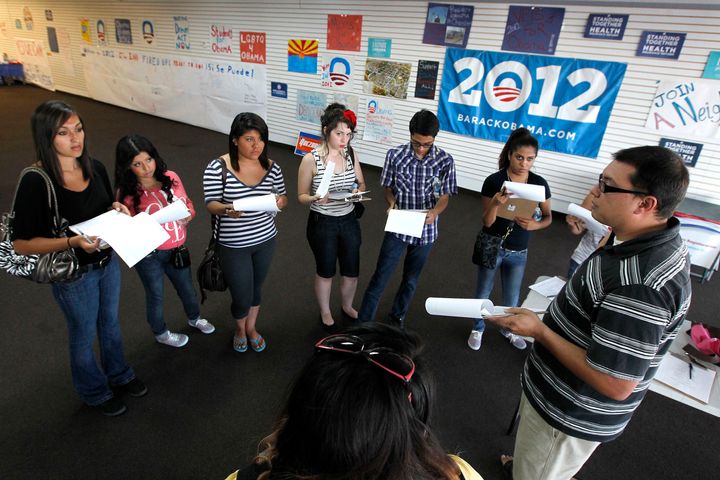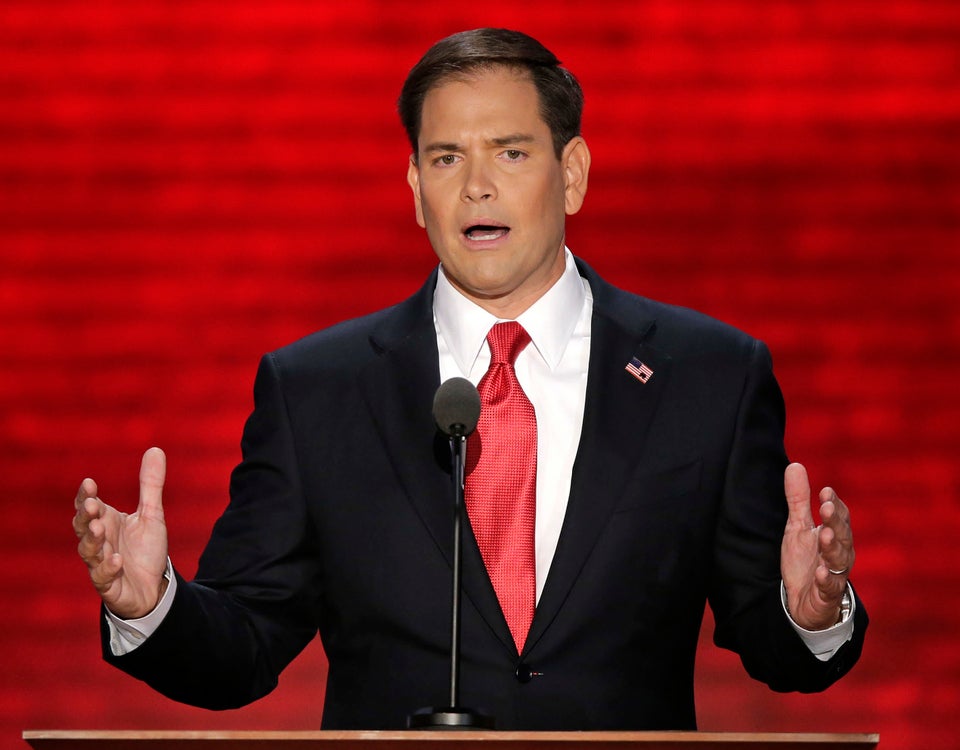
If last week’s election outcome stunned Mitt Romney's campaign and converted some Republicans to the orthodoxy of urgent and comprehensive immigration reform, then a Pew Hispanic Center report released Wednesday may spin the political world off its axis.
In the next two decades, a convergence of social and demographic trends will nearly double the number of Latinos who are eligible to vote, from 23.7 million today to about 40 million by 2032, according to the Pew report. In 2012, Latinos comprised 11 percent of the electorate. They will make up 16 percent of eligible voters by 2032, the report said.
Latino voters already are the fastest-growing portion of the electorate and cast 10 percent of all the ballots in the presidential election. The Pew report shows Latinos will be an indisputable key to the White House, several state capitols and thousands of local councils and school boards. Such a dramatic shift in the American electorate -– the adults who are eligible to register and vote -– could force new political alliances, policy priorities and alter who wins public office.
“I think the growing size of this population and the dispersement of this population around the country may not be fully understood,” said Mark Hugo Lopez, associate director of the Pew Hispanic Center, a nonpartisan research center based in Washington. “But it should be.
“Just look at what happened this year,” said Lopez. “Latino voters proved to be pivotal in battleground states where people expected like Nevada, Colorado and Florida, places with a large Latino vote. And then in places like Virginia and Iowa, places with small Latino populations, their votes proved decisive.”
In Iowa, Obama won by just under six percentage points. Latinos make up nearly 3 percent of the state’s voters and all but a quarter of these individuals cast ballots for President Barack Obama. In Virginia, the race was even tighter. Obama beat Romney by just three points. Latinos make up 2.3 percent of that state’s voters and all but about 23 percent voted for Obama.
A few weeks before the election, Sylvia Manzano, a senior analyst at Latino Decisions, an independent polling firm, projected that Romney would not be able to win unless he somehow swept the table of battleground states. Instead, Romney lost every swing state except North Carolina.
The influence of the Latino vote and growing Hispanic voter participation was so decisive that Obama mentioned both in his first post-election press conference on Wednesday.
Well, I think what was incredibly encouraging was to see a significant increase in Latino turnout. This is the fastest-growing group in the country. And you know, historically what you've seen is Latino vote -- vote at lower rates than the broader population. And that's beginning to change. You're starting to see a sense of empowerment and civic participation that I think is going to be powerful and good for the country.
And it is why I am very confident that we can get immigration reform done.
In 2012 alone, a pair of congressional candidates in Texas held the first all Spanish-language policy debate focused on the future of Social Security. The two presidential campaigns spent more than $10.3 million on ads targeting Latino voters and deployed teams to try to mobilize Latino voters in both Spanish and English.
In September, both Obama and Romney participated in the first candidate forums on the Spanish-language network Univision, after the Presidential Debate Commission selected debate moderators who all were white.
In the tightly controlled, campaign-contoured world of presidential candidate appearances, both Romney and Obama had no advance warning of the Univision questions and relied interpreters to relay questions in English through an in-ear device and translate answers into Spanish. The events also were available to online viewers in English, with an interpreter relaying questions asked by the hosts in Spanish.
Romney reportedly demanded that one portion of the event be re-taped, BuzzFeed Politics reported. The Romney campaign denied this when questioned by The Huffignton Post, but wouldn't answer detailed questions.
In addition to the Latino electorate members tallied by Pew, Latinos who are younger than 18, those who are legal permanent residents who may become citizens, and those who are undocumented may eventually become voters, Lopez said. They are not a part of the Pew projection of 40 million eligible Latino voters.
It remains unclear how many eligible voters will ultimately participate in elections.
“It’s hard to tell what will happen in the next election, the next few elections,” Lopez said. “It depends on the candidates. It depends on the issues and the nature of those elections.
"But if you look at what’s happened with African American vote since the 1990s, there was a large gap between white voter turnout and black voter turnout that is almost gone now. It’s been eroding for some time and now. Their turnout rate is virtually the same.”
